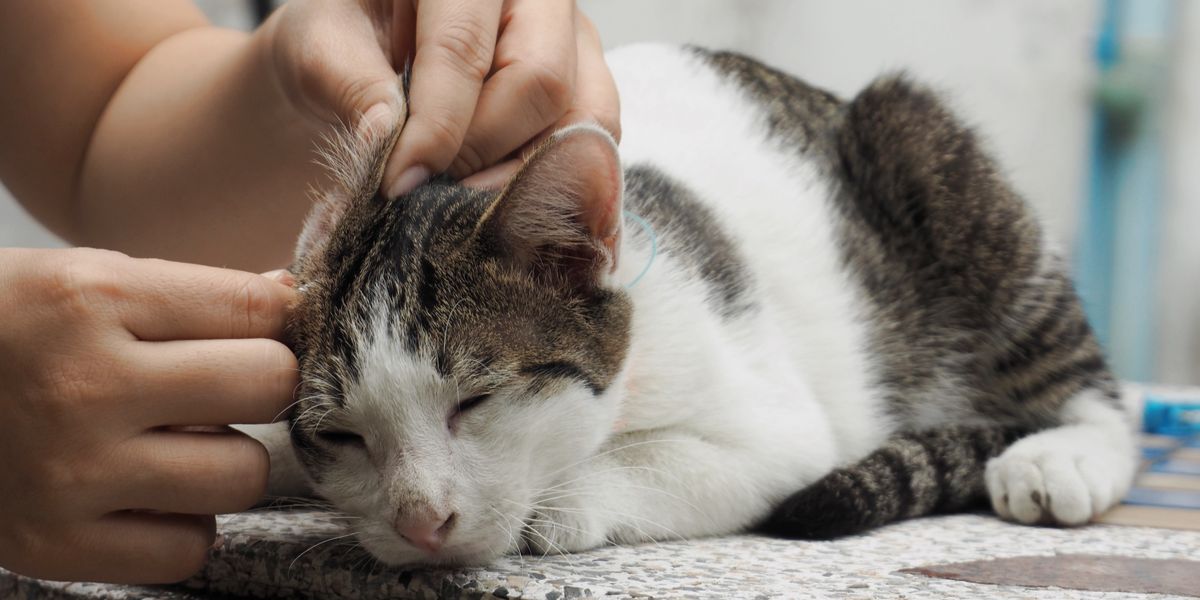
This article aims to explain the details of ear discharge in cats, a problem that can happen for a number of reasons. The aim of this article is to provide a simple, clear explanation about ear discharge for cat owners.
What is Ear Discharge?
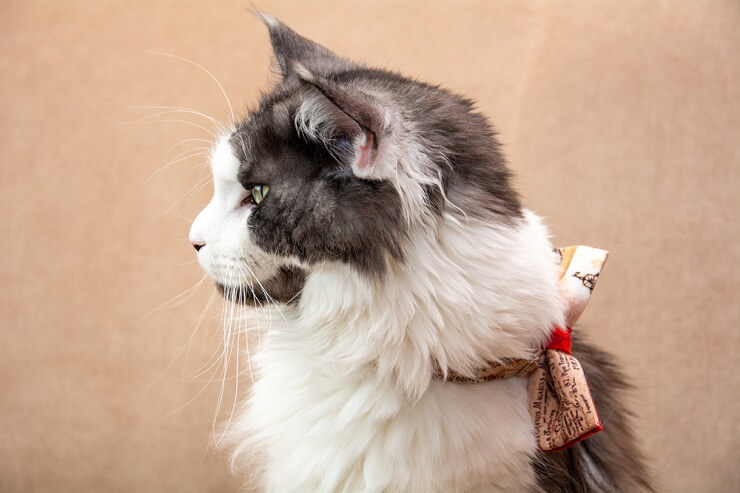
Normally, a cat’s ears are clean, with no extra discharges or materials visible in or around the ears, on the inside of the ear flap or pinna, or around the top of the opening of the ear. When ear discharge is present, these appear as crusty, scabby, brown, yellow, or green-tinted material gathering around the inside of the ear and often spreading to the adjacent skin.
How Common is Ear Discharge?
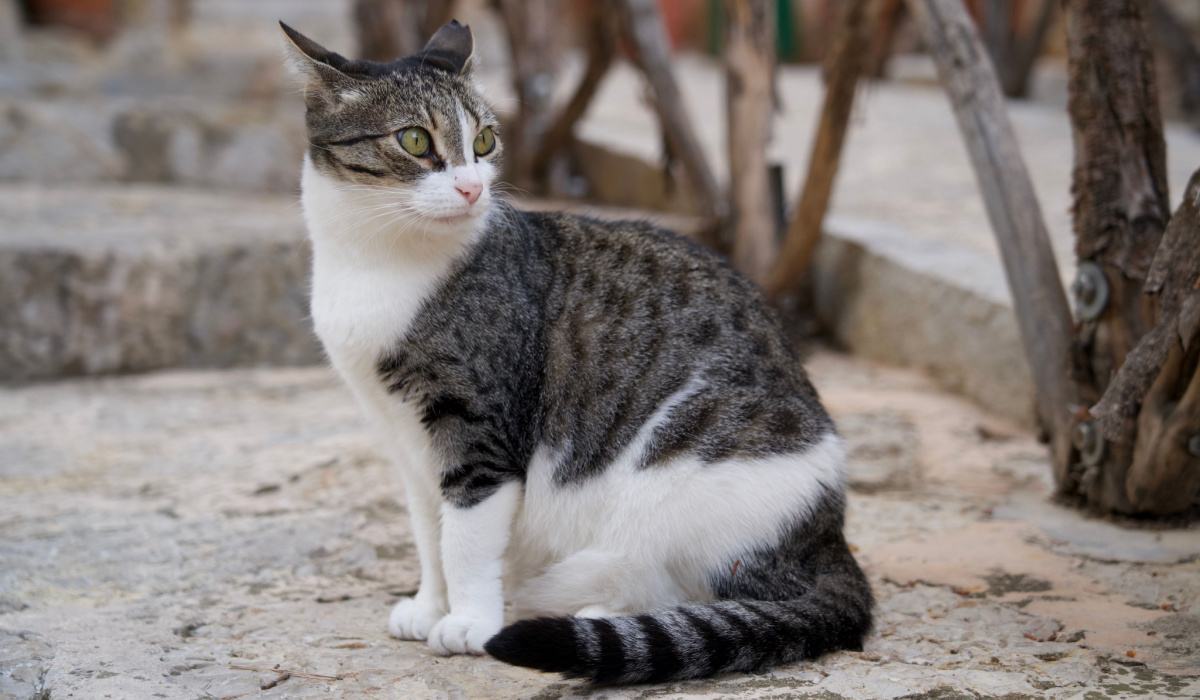
Ear discharge is common, especially in kittens or in feral-type cats that have been living in groups. They can develop in any cat, however, at any time.
How Do Cats Get Ear Discharge?
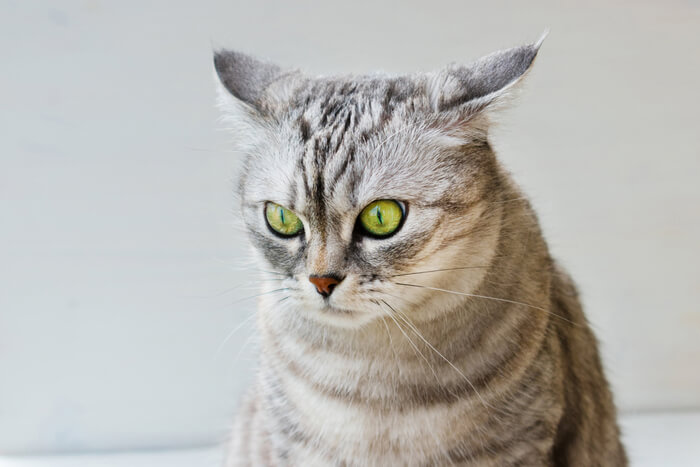
Cats develop ear discharge for a number of reasons, primarily irritation of the ear lining.
Ear discharge develops as a consequence of a number of different ear problems. If the lining of the ear is irritated (i.e. so-called otitis externa), the ear canal produces extra secretions.
This is part of the immune system’s response e.g. to bacteria, as the secretions have an anti-microbial effect. As these secretions build up, they can be seen by the owner as a waxy build-up, and sometimes they move upwards so that they gather around the opening of the ear.
Symptoms of Ear Discharge in Cats
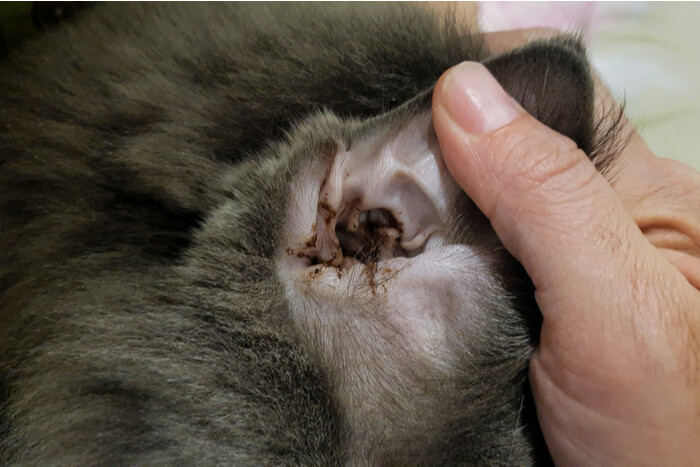
Ear discharge may be brown, green, or yellow. This type of discharge is commonly referred to as “ear wax”.
When an owner examines their cat’s ears, there should normally be a clean, dry skin surface, and when the ear canal itself is checked, the lining should be clean and empty, with no liquid or solid material in sight.
If ear discharge is present, these may be seen as brown, yellow, or even green coloured material around the opening of the ear. If the ear is examined closely, sometimes this type of discharge may just be seen inside the ear canal.
This type of discharge is commonly referred to as ear wax.
Often affected cats may be head shaking, or pawing at their ears, because of the ongoing ear disease. Most often, the outer ear is the only affected area, but if there is also disease of the middle ear or inner ear (so-called otitis interna), there may be other signs, such as a head tilt, or loss of balance. There may also be hearing loss.
Causes of Ear Discharge in Cats
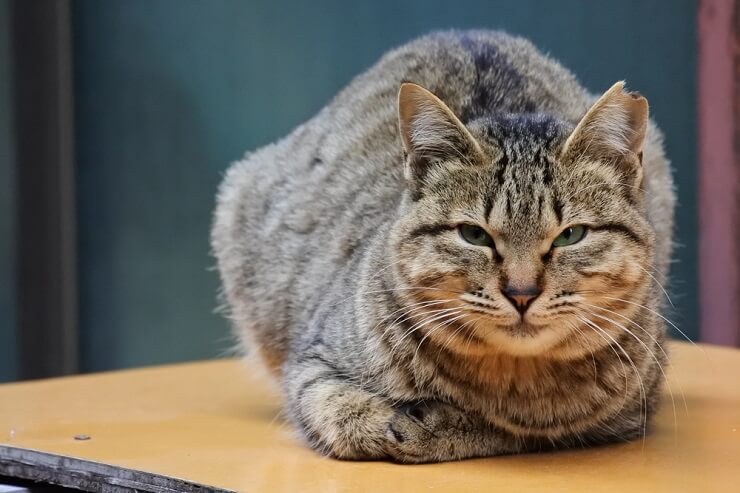
The most common causes of ear discharge include:
- Ear mite infestations
- Infections of the external ear canal – so-called otitis externa
- Polyps or growths inside the ear canal
- Foreign bodies in the ear canal, such as grass seeds
Diagnosis of Ear Discharge
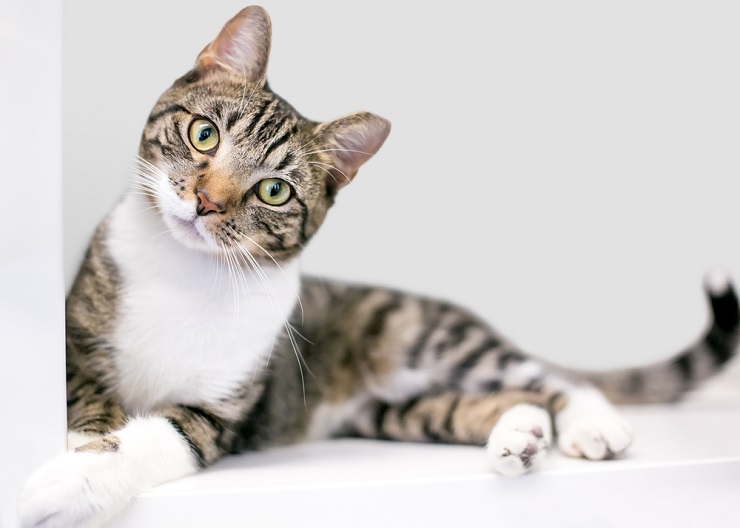
The diagnosis of the presence of an ear discharge is easy to make, as it is a visual observation. However it is important that an accurate diagnosis of the cause of the ear discharge is made by your DVM veterinarian, and a series of steps may be needed to do this.
- Detailed History Taking
Your vet will discuss every aspect of your cat’s life and health care. There are other causes of ear discharge, and this history will help to differentiate the various possible causes. - General Physical Examination
Your veterinarian will check your cat over carefully, noting any other physical signs of illness. - Otoscopic Examination Of The Ears
It is impossible to properly examine the inside of the ear in detail without the use of an otoscope (also called an “auroscope”) which is a hand-held instrument with a light source, a cone to insert in the ear, and a magnifying lens that allows clear visualisation of the ear canal, right down to the eardrum. Sometimes this may be connected to a screen allowing your veterinarian to show you what they are looking at. This equipment allows direct diagnosis of many of the causes of ear discharge, including ear mites, polyps, and small foreign bodies. In some cases, sedation may be needed for this examination to be done effectively. - Other Tests
Your veterinarian may wish to take samples from the ear canal, including pieces of the discharge for direct examination under the microscope (so-called “cytology), and perhaps taking a swab for bacterial and fungal culture in the case of an outer ear infection. If a polyp is seen, a biopsy may be taken, and radiographs (x-rays) of the skull may be recommended to check for abnormalities of the middle and inner ear. In some cases, tests for systemic diseases (such as FIV or FeLV – leukemia) may be suggested.
How Much Does It Cost To Treat a Cat With Ear Discharge?
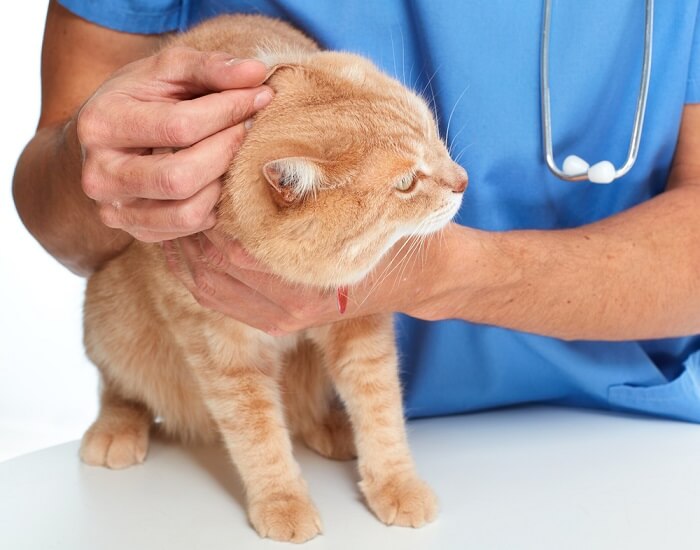
It is impossible to estimate this cost, as there are so many possible issues that can cause ear discharge. You should ask your veterinarian for a detailed estimate before agreeing to proceed with treatment.
The cost could be less than $100 to treat a simple case of ear mites, or over $1000 in severe cases e.g. if your cat has an ear polyp requiring complex surgery and follow-up treatment.
Also Read: How Much Does It Cost To Own A Cat
Treatment for Ear Discharge in Cats
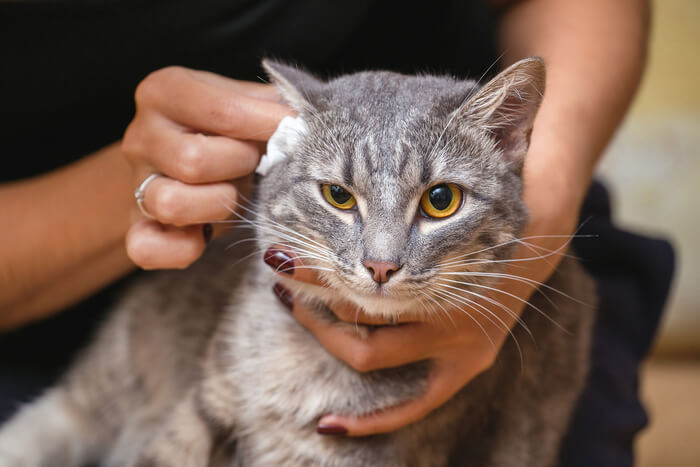
Regardless of the discharge’s underlying cause, ear cleaning is generally recommended to remove discharge.
Treatment options for ear discharge depend on the underlying cause. As examples:
- Mite infections may require an anti-mite ointment to be applied regularly for up to three weeks.
- Bacterial infections of the external ear canal – so-called otitis externa – may need antibacterial and anti-yeast ointment to be applied, as well as some investigation of the underlying cause in the first place, especially in chronic ear infections.
- Polyps or growths inside the ear canal may need complex surgery to remove the polyps or growths.
- In all cases, ear cleaning may be recommended, to remove any discharge so that this does not further complicate the underlying primary problem. Ear drops can be used to soften the wax, and cotton buds (q-tips) or a cotton ball can be used carefully to wipe away accumulated wax, as long as care is taken not to push wax deeper down into the ear canal. Care needs to be taken when selecting and using ear drops: deafness is a possible consequence if the wrong drops are used, especially if your veterinarian has not examined the ear to rule out a ruptured eardrum.
Read More: Best Ear Mite Treatment for Cats
Monitoring and Prognosis
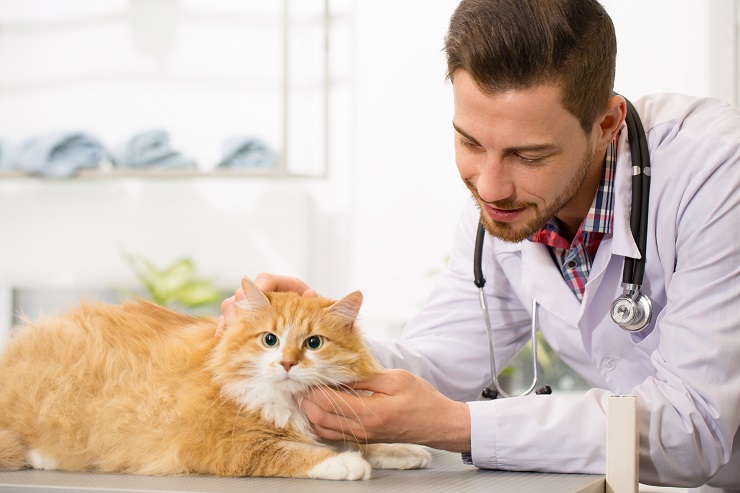
Ear discharge can be easily monitored by regularly inspecting the ear. With the right treatment, most ear discharge can be fully resolved.
Conclusion

When veterinarians spay or neuter a cat that will be returned to the outdoors, the tip of one ear is also removed so it’s easy to see the cat has been fixed.
Ear discharge is not normal in cats, so if your cat has evidence of discharge, it’s important to identify the cause so that appropriate treatment can be given. In nearly all cases, it’s best to make contact with your veterinarian immediately if your cat has an ear discharge.
Frequently Asked Questions
Why is my cat's ear leaking fluid?
It is not normal for a cat’s ear to leak fluid of any kind, so you need to take your cat to your veterinarian for this to be treated professionally.
How can I treat my cat's ear infection at home?
A simple treatment, with regular use of a good quality ear cleaner, is possible, but in most cases, a cat with an ear infection needs professional treatment using prescription only medication such as anti-bacterial and anti-fungal ear ointments or drops.
What is the brown stuff in my cat's ears?
When the lining of the ear canal is irritated, it reacts by producing increased levels of secretions which include wax. As this accumulates, it condenses and dries out as a dark brown, thick substance which can be seen from the outside. It’s important to find out the cause of the irritation which has prompted this increased wax production so that it can be effectively treated.
How do you know if your cat has an ear infection?
There are three main signs of ear infections
The cat may have visible discharges around the opening of the ear
The cat may have a head tilt, or may be scratching at the ear repeatedly
There may be a foul odor around the cat’s head, due to the accumulation of discharges








What does it mean when you can’t see ear drum, only fluid
Luv my cat
Michele
Hi Michele, this is a question best presented to your vet. Without knowing more about your cat’s condition and background, as well as more details on the fluid buildup, it’s difficult to give a good response. You may want to ask about this in the All About Cats Community, where one of our veterinary moderators may be able to give personalized advice.